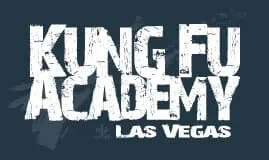Hung Gar, a widespread southern Chinese martial arts system, originated from fighting monks at the first Shaolin Temple in Henan. Chan Buddhism and Taoism influenced the Shaolin system. Legendary Bodhidharma, Da Mo, taught monks qi-gong around 500 AD. Breathing exercises improved health, facilitating longer meditation. Fluid self-defense techniques emerged, softer in movement execution. Five animal mimicking techniques—tiger, crane, dragon, snake, leopard—developed to protect the Henan temple from bandits and invaders.
Hung Gar Kung Fu
During the Ming Dynasty (1368-1644), Shaolin monks excelled in fighting skills. They defended the sovereignty and villages against attackers. Arts flourished. Numerous fighting styles, including Hung Gar, emerged. Abbot Gee Sin Sim, from the Henan Shaolin Temple, planted the seed of Hung Gar and other systems. During the Ching Dynasty (1644-1912), the Shaolin system welcomed outsiders, seeking support to overthrow Manchurians. Hung Hei Goon, a standout follower, gained the abbot's attention for personal training. The Shaolin monks, perceived as a threat, suffered multiple attacks. Ching regime burned the monastery down. Surviving monks, including Gee Sin Sim, fled to the southern temple in the Nine Lotus Mountain in Fijian province. There, the abbot systematized training to protect the temple.
Tea merchant Hung Hei Goon struggled under the Ching government's tyranny. To honor the Ming Dynasty, he changed his family name from Jyu to Hung. He opened a school, teaching the Hung Gar system, unassociated with its source. He married Fong Wing Chun, a student of the White Crane system. Hung Hei Goon's martial arts skills earned him the nickname "The Southern Fist." He combined the Shaolin Five Animals style with his wife's White Crane system, evolving Hung Gar. The school's reputation spread across southern China. Gee Sin Sim sent his top students to Hung Hei Goon for further training, including Luk Ah Choy, who became the forefather of several traditional Chinese systems.
In Guangzhau, Luk Ah Choy taught Wong Tai, who then taught his son, Wong Kay Ying. Wong Kay Ying passed the knowledge to his son, Wong Fei Hung. Wong Kay Ying and Wong Fei Hung received the secret form, Iron Wire Fist (Tit Seem Kuen), from grateful martial artist Luk Fuh Sing. Wong Fei Hung's signature was the Tiger Crane (Fu Hok) form. His tragic life included losing wives and a son, and withholding training from other sons for protection. He married Mok Gwai Lan, a descendant of the Mok Gar system.
Hung Gar Kung Fu
Lam Sai Wing, a pork butcher, was one of Wong Fei Hung's best students. He perpetuated the Hung Gar system and set the precedent for future masters. Lam Sai Wing adopted his orphaned nephew, Lam Cho, who later made his mark on the system. Lam Cho's sons, Lam Chun Fai and Lam Chan Sing, now carry on the family tradition, with Lam Chun Fai as the reigning grandmaster.
Kwong Tit Fu, a student of Lam Cho, emigrated to the United States. Calvin Chin secured him as a Kung Fu instructor, establishing the first Hung Gar Tiger Crane school on the East Coast. After extensive research and development, Kwong Tit Fu founded his system, Fu Hok Tai He Morn. Calvin Chin became the top disciple, continuing the tradition at his school.
Hung Gar, a southern Chinese kung fu style, blends external and internal methods. It emphasizes strong stances, long and short hand techniques, and efficient movement. Advanced techniques are complex, and Hung Gar has more intricate hand techniques and stance
Hung Gar In the Movies
To become a skilled Hung Gar Kung Fu practitioner, you must develop your physical fitness, mental discipline, and martial arts skills through a combination of exercises. Practicing forms, pre-arranged sequences of movements that simulate combat, is fundamental to Hung Gar Kung Fu training. You must master these techniques and movements to improve your timing, precision, and technique.
Sparring is another essential aspect of training that enables you to put your techniques into practice and develop your speed, reflexes, and agility. It also develops your mental focus and discipline by requiring you to react quickly and stay alert.
Conditioning exercises and strength training are critical components that help build your strength, endurance, and agility necessary for effective self-defense. You can try breaking boards, practicing kicks against heavy bags or pads, or training with weights.
Cultivating internal energy or Qi is equally important, and practitioners use specific breathing techniques and meditation to develop their Qi, which enhances strength and power in combat situations.
Lastly, mental focus, concentration, and relaxation are essential skills for effective self-defense and personal growth. You can use meditation, breathing exercises, and mental visualization to cultivate these skills, developing the mental fortitude to face challenging situations on and off the mat.
In conclusion, you can become a skilled Hung Gar Kung Fu practitioner by combining physical and mental exercises. Practicing forms, sparring, conditioning exercises, and strength training improve martial arts skills and physical fitness. Cultivating internal energy and mental discipline develops mental fortitude for effective self-defense and personal growth.
